In a market segment as competitive as the compact SUV, new models have to grab the attention of prospective customers, with one or more features that really stand out in the showroom or on the test drive.
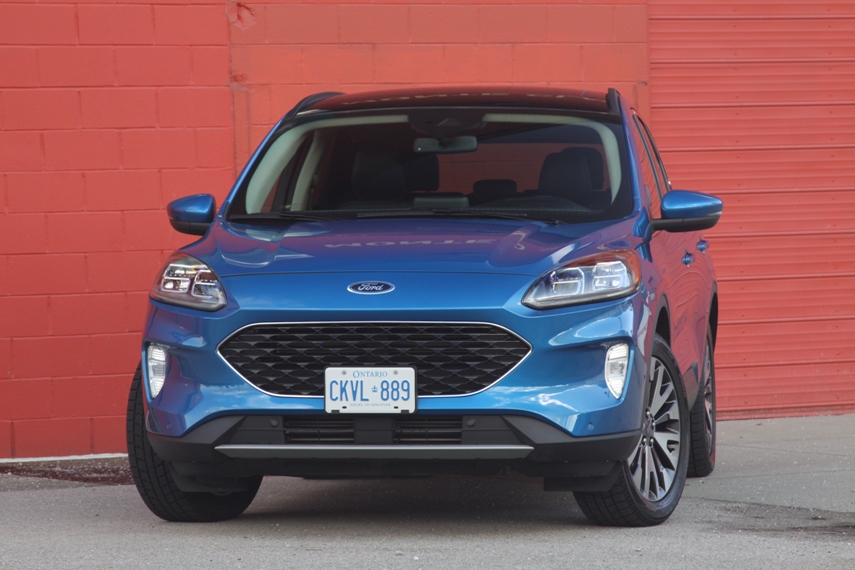
It is into this dog-eat-dog segment that Ford has launched the all-new Ford Escape. Compounding its importance to Ford, it is expected to help keep some of the customers of the now-deleted hatchbacks (Focus) and sedans (Fusion) in the corporate fold, so it had to have some appeal to those people too.
With that last factor in mind, the new styling is smoother and more car-like than the last generation of Escape, with some having compared it to the lean and sporty look of the Porsche Macan. It sits solidly on its wheels, with a good-looking stance.
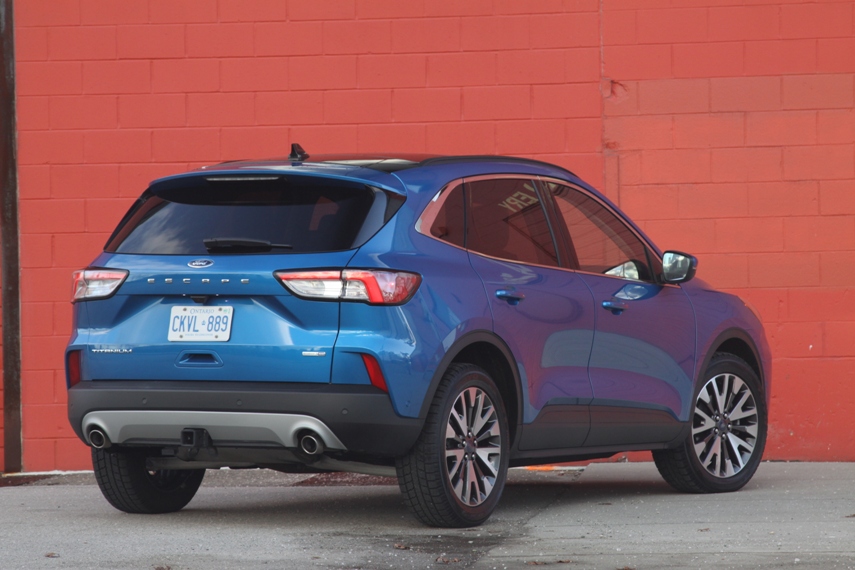
The performance image is more than skin deep, as the Titanium (top-of-the-line) model we drove was equipped with a 2.0-litre EcoBoost turbo four that pumped out 250-horsepower, and 280 lb-ft of torque as low as 3,000 rpm. This, we suggest, is the Escape’s most obvious stand-out feature – its power and pure speed for a compact SUV. We estimated a zero-to-100 km/h time of about 6 seconds, which is plenty fast for all but the most hard-core performance fan, for whom there is the Mustang in the same showroom. Those not especially concerned with such levels of performance have the option of ordering one of the lesser models with the 1.5L turbo three that puts out the kind of power that most of the Escape’s rivals have – 181 hp. Of note, this engine is described on Ford’s public website as a four-cylinder.
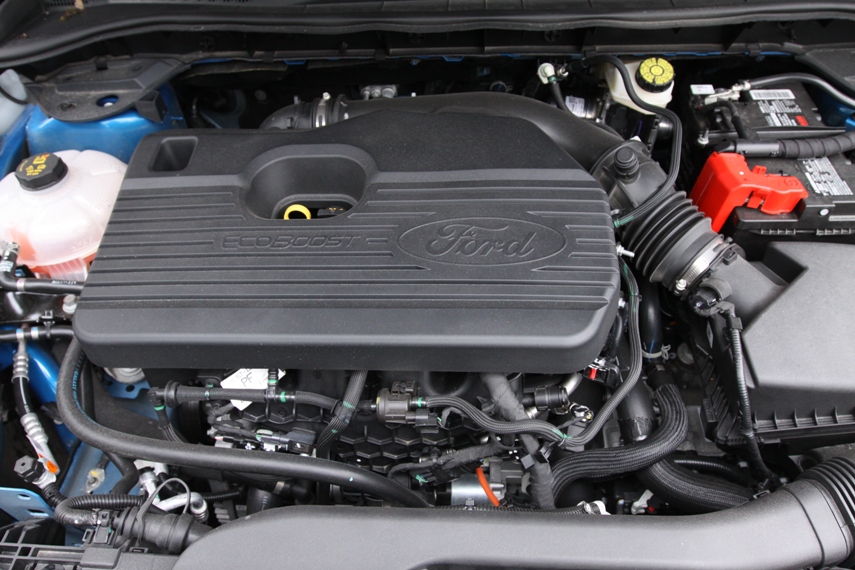
In any case, all-wheel drive is available across the line, with front-drive standard on all but the Titanium. Both engines get an 8-speed automatic, with the bigger one also getting “SelectShift” capability via a manual setting and paddles on the steering wheel. It will hold gears in manual, but our tester was a little delayed in shifting up, and there was a bit of RPM flair in the process, so some sport tuning wouldn’t hurt. Drive modes included Normal, Eco, Sport, Slippery, and Deep Snow/Sand, and there is the Stop/Start function for a little more efficiency in traffic.

The Escape’s overall handling, the general feel of it going down the road, is one of smooth nimbleness, although cornering performance is perhaps limited somewhat by the comfort-oriented tires and suspension settings, which do a very good job of providing a nice ride even with the low-profile 19-in. tires. Having said that, we’d like to see an Escape with the same sort of sport tuning as its big-brother, the Edge ST. It certainly has the power around which to build such a vehicle.

At first glance, the Titanium’s interior looked attractive, if maybe a bit austere, which isn’t uncommon in Ford’s design language. There is noticeably more room than the last Escape, as much as the roomiest SUVs in this class, so that is another stand-out feature. The leather-trimmed front seats are quite comfortable and supportive, and the 10-way power adjustment helps a lot given that the lower cushion is somewhat short, another not-surprising thing. The rear seats are good too, and with lots of room back there too. Some of that leg room, if it is maxed out, will be at the expense of cargo room, via the sliding fore-aft functionality of the seat assembly. Said cargo area is large and a useful shape, and of course, its size can be greatly increased by folding the rear seats down. Not unlike most such vehicles, the folded seats result in a load floor that is neither flat nor the same level as the rear cargo deck.
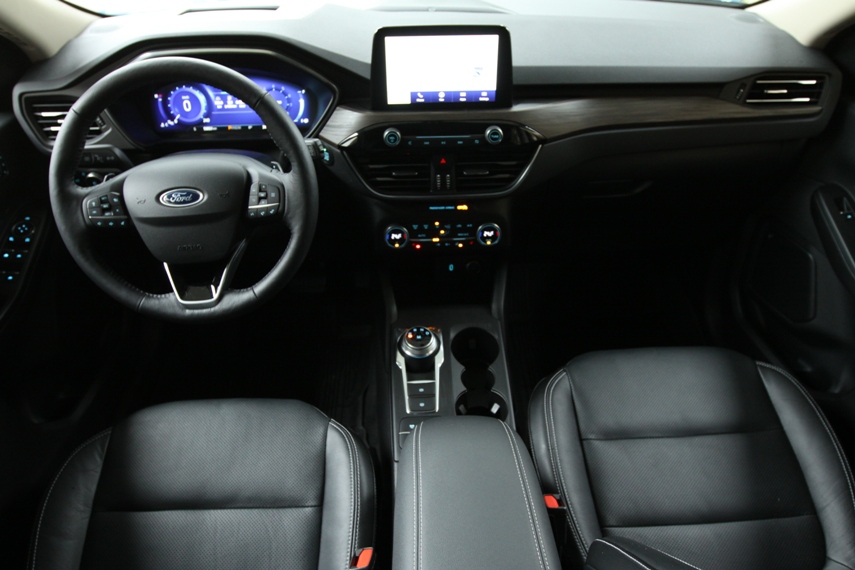
There is no shortage of technology in the Titanium. On the safety side, Ford is touting the CoPilot360 bundle of driving aids, which includes Forward Collision Warning, Lane Departure Warning, Blind Spot Information, lots of the up-to-date electronic systems. There is also on-board Wi-Fi, Active Park Assist, voice-activated touch-screen navigation, a 12.3-inch touch screen to go along with the fully digital instrument cluster controlled by Ford’s excellent SYNC-3 system, and a ten-speaker, 575-watt Bang&Olufsen audio system that sounds great.

According to Ford of Canada’s website, the Titanium starts at $40,149, and given how well-equipped it is, there are few options. The Premium Package 2.0 adds Panoramic Vista Roof, head-up display and 110v power outlet for $2,350, so it is fair to say that most who would go for this really want that sunroof. The one-lower SEL model allows you to order the sunroof alone for $1,750, but not on Titanium. Included in all Escapes with the 2.0L engine is the Class II Trailer Tow package, which allows you to tow up to 3,500 pounds (1,587 kg).
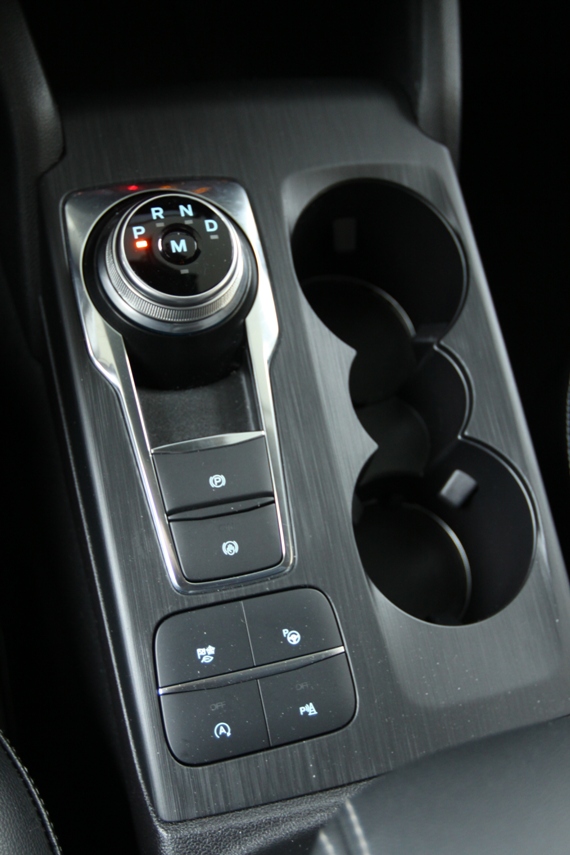
There is one unusual thing we’d like to address. Most people would agree that the cargo compartment of an SUV, being surrounded by glass no matter how smoked, is a low-security area without some sort of cargo cover to conceal the contents from prying eyes. The thing is, we (several people) could see no obvious designed-in provisions, no slots and depressions in the side-wall, in the Escape for any sort of cargo cover. The Ford website does make mention of an optional (for $150) “Easy-Access Cargo Shade,” which should have been standard in at least this top model, or included with the premium package. We’d sure be surprised to see how it is actually installed in the vehicle, since there is no photo of it on the Ford website. We can’t imagine owning an Escape without it.
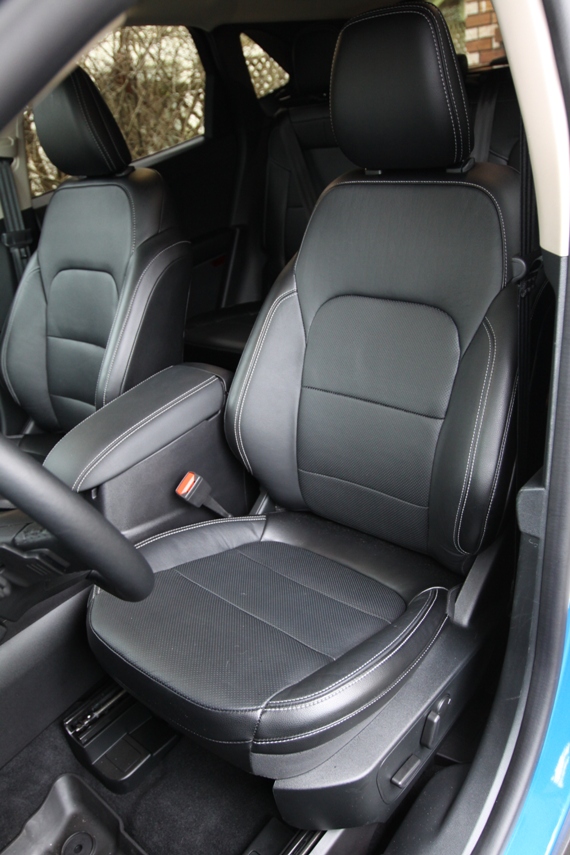
Later on, we had the chance to also drive the Escape Hybrid AWD, with a powertrain last seen two generations ago. It was the ‘regular’ non-plug-in hybrid technology with which the public has been familiar for over 20 years, with the expected very refined operation as it switches back and forth between engine and motor. Having said that, over our 110-km highway drive, the Hybrid returned 5.1L per 100 km efficiency, with the trip computer indicating that fully 37 km were driven on electric power alone. Given that the official rating is 6.4L highway, and 5.5 city, we’d expect an outstanding 4-something litres in city consumption, versus the official 10.4L and actual observed 12.2L city consumption in the gasoline Escape AWD. Even more interesting, the Titanium Hybrid AWD costs some $2,000 less than the regular Titanium. Hmmm….

In any case, the new Escape is a compelling entrant in the compact SUV wars, with strong points including a very attractive new exterior design, relatively high levels of straight-line performance, one of the roomiest interiors in the segment especially in the back seat, refined handling, and all the technology you could want if you order the Titanium model. Given their respective prices, we’d sure take a close look at the Titanium Hybrid, too.
Specifications
- Price as Tested: $40,149
- Vehicle type: 5-passenger Crossover SUV
- Engine: 2.0L DOHC turbo I4
- Power: 250 hp @ 5,500 rpm
- Torque: 280 lb-ft @ 3.000 rpm
- Drivetrain: All-wheel drive
- Transmission: 8-speed auto
- Max. Trailer Rating: 1,587 kg / 3,500 lb.
- Curb Weight: 1,610 kg / 3,553 lb.
- Fuel Efficiency Rating: 10.4 / 7.5 L/100 km, city/hwy
- Fuel Efficiency Observed: 12.2L/100 km, city




